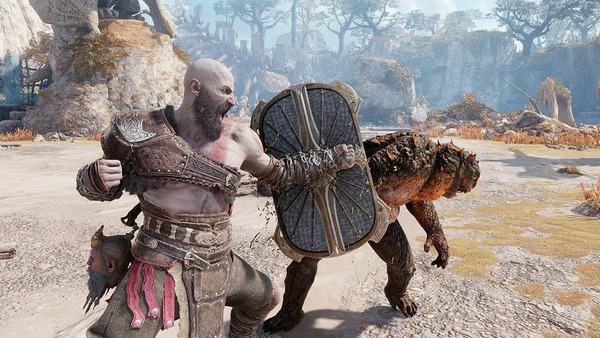Popular Now
FIFA 23, EA Sports’ last football title under the FIFA branding, stands out for its attention to gameplay realism and innovation in offline modes. Among these, Career Mode has received a range of updates, with player development being one of the most intricate and impactful mechanics. This system determines how your team grows over time, how players reach their peak, and ultimately, how you can dominate leagues and cups through smart planning. In this article, we dive deep into FIFA 23’s player development mechanics, analyzing every stage from youth prospects to aging veterans. Whether you're managing a Premier League titan or a struggling second-division team, understanding this core system is essential for long-term success.

1. Understanding Player Growth in FIFA 23 Career Mode
Player development in FIFA 23 revolves around a combination of factors: match performance, training intensity, potential rating, morale, and positional changes. Every player has a base potential, which EA assigns based on real-life attributes and projected career trajectories.
The Role of Dynamic Potential
A key system is "Dynamic Potential," introduced in earlier iterations and refined in FIFA 23. This allows a player's potential to fluctuate depending on performance and playtime. For instance, a young striker who consistently scores will see their potential increase, while a benchwarmer may see theirs stagnate or decrease. This feature ensures that your decisions have long-term consequences and rewards attentive management.
Key Development Factors
-
Match Rating: Weekly performance influences growth rate.
-
Training Sessions: Specific drills build targeted skills.
-
Morale: Happy players grow faster.
-
Playtime: Regular minutes on the pitch are essential for development.
2. Starting From the Bottom: Youth Academy Setup
One of the most powerful tools in Career Mode is the Youth Academy. By sending out scouts, you can recruit hidden gems and develop them into first-team players.
Scout Assignments
Setting up your scouting network properly is the first step. You can choose:
-
Country of assignment
-
Scout experience and judgment
-
Player type to search (physically strong, technically gifted, etc.)
Developing Young Talent
Once players are signed, managing their development plan is critical. Each player comes with a projected potential (e.g., "Potential to be Special"), but those numbers only come to life if you tailor their development plan.
Development Plan Options:
-
Position Change
-
Balanced Growth
-
Specialized Role (e.g., Poacher, Playmaker)
3. The First Years: Integrating Youth Into the First Team
Bringing academy players into your senior team isn’t just about overall rating; it’s about readiness, squad depth, and long-term planning.
Managing Squad Role
When promoting a youth player:
-
Assign an appropriate role (sporadic, prospect, crucial)
-
Avoid overplaying them to prevent burnout or drop in form
-
Gradually increase minutes through domestic cups or late-game substitutions
Building Confidence
Confidence can be boosted through:
-
High match ratings
-
Clean tactical instructions
-
Positive media responses
4. Using Development Plans to Shape Your Team
In FIFA 23, development plans are no longer passive; they are strategic levers.

Position Conversion
One of the most powerful tools is changing a player's position. For instance, converting a pacey CAM to a winger or a fullback to a wide midfielder can uncover hidden strengths.
Key Considerations for Conversion:
-
Pace and stamina stats
-
Work rates
-
Weak foot and skill moves
Attribute Focus Areas
Each plan prioritizes certain stats. For example:
-
Mobile Striker boosts acceleration and positioning
-
Ball Winning Midfielder focuses on interceptions and strength
5. Monitoring Player Performance and Potential
Tracking how a player is progressing is essential to long-term success.
Player Development Screen
This screen shows:
-
Overall and potential
-
Growth rate
-
Time left for development plan results
Utilizing Squad Hub
In Squad Hub, sort players by:
-
Form
-
Morale
-
Match sharpness This helps decide who needs more time or deserves a rest.
6. Dealing With Stagnation and Regression
Not every player will become a star, and some will regress.
Signs of Stagnation
-
Development Plan shows 'No Growth'
-
Sharpness remains low despite playing
-
Consistent poor match ratings
Countering Regression
-
Change development plan
-
Send player on loan
-
Assign a mentor (captain with high influence)
Loan Strategy
Loans aren’t just for game time. A good loan:
-
Matches player role and position
-
Includes playtime clause
-
Goes to a club with similar tactics
7. Mid-Career Management: Peak Performance Players
Once players reach their mid-20s, development slows but doesn't stop.

Maintaining Form
Even peak players benefit from:
-
Fitness rotation
-
Leadership responsibilities
-
Specialized training (free kicks, penalties)
Contract Renewal
Keep them happy with:
-
Wage increases
-
Bonuses for goals, appearances
-
Squad role upgrades
8. Late Career Transition and Veteran Influence
Veterans play a different role: mentorship, depth, and stability.
Development Shift
As physical stats drop:
-
Technical stats can still rise
-
Set piece ability, vision, and composure become assets
Retirement and Regen Planning
Prepare for retirements by:
-
Promoting youth early
-
Signing regens or scouting their regions
-
Observing free agents post-retirement windows
9. Using Data and Analytics for Better Development Decisions
FIFA 23 integrates statistics more effectively than ever.
Data Tools You Can Use
-
Match stats for performance trends
-
Team sheets for tactical synergy
-
Training performance (A-F grades)
Creating Custom Reports
Keep notes on:
-
Players outperforming their rating
-
Training vs. match growth comparison
-
Bench players who might benefit from a change
10. Building a Dynasty Through Smart Development Cycles
Smart managers think in development cycles of 3–5 seasons.

Strategic Planning
-
Year 1–2: Scout, promote, and experiment
-
Year 3–4: Shape team around top talents
-
Year 5: Sell wisely and regenerate depth
Key Success Traits
To build a long-term powerhouse:
-
Balance age profiles across your squad
-
Sell players at their value peak
-
Track potential regens and wonderkids globally
Conclusion
Player development in FIFA 23 Career Mode is a deep, interconnected system that demands strategic foresight and adaptability. From scouting youth players and designing tailored development plans to managing veteran transitions and interpreting performance data, every decision matters. The more carefully you approach each stage of development, the more success you’ll find in building a dominant and sustainable football dynasty.
















